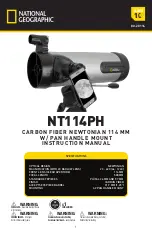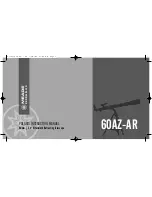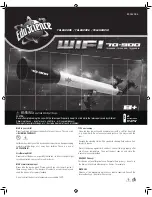
11
Figure 2-23
A
A
d
d
j
j
u
u
s
s
t
t
i
i
n
n
g
g
t
t
h
h
e
e
E
E
q
q
u
u
a
a
t
t
o
o
r
r
i
i
a
a
l
l
M
M
o
o
u
u
n
n
t
t
In order for a motor drive to track accurately, the telescope’s axis of rotation must be parallel to the Earth’s axis of
rotation, a process known as polar alignment. Polar alignment is achieved NOT by moving the telescope in R.A. or
Dec., but by adjusting the mount vertically, which is called altitude. This section simply covers the correct
movement of the telescope during the polar alignment process. The actual process of polar alignment, that is
making the telescope’s axis of rotation parallel to the Earth’s, is described later in this manual in the section on
“Polar Alignment.”
A
A
d
d
j
j
u
u
s
s
t
t
i
i
n
n
g
g
t
t
h
h
e
e
M
M
o
o
u
u
n
n
t
t
i
i
n
n
A
A
l
l
t
t
i
i
t
t
u
u
d
d
e
e
•
To adjust the latitude of the polar axis, loosen the front latitude adjustment screw (locking bolt) slightly — see
Figure 2-24.
•
To increase or decrease the latitude of the polar axis, tighten or loosen the front latitude adjustment screw to
select the desired latitude. Then, tighten securely the front latitude adjustment screw.
The latitude adjustment on the AstroMaster mount has a range from approximately 20° to 60°.
It is best to always make final adjustments in altitude by moving the mount against gravity (i.e. using the rear
latitude adjustment screw to raise the mount). To do this you should loosen both latitude adjustment screws and
manually push the front of the mount down as far as it will go. Then tighten the rear adjustment screw to raise the
mount to the desired latitude.
Figure
2-24
Latitude Adjustment
Screw (Rear)
Latitude Adjustment
Screw (Locking Bolt)
Figure 2-22



































